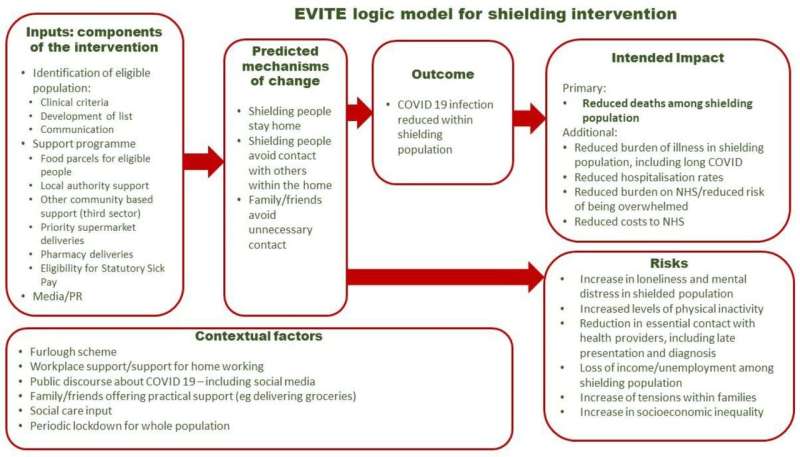This article has been reviewed according to Science X's editorial process and policies. Editors have highlighted the following attributes while ensuring the content's credibility:
fact-checked
peer-reviewed publication
trusted source
proofread
Shielding from COVID-19: Unraveling the policy

A new study by Swansea University's Medical School has explored the rationale behind the creation of the COVID-19 shielding policy for clinically vulnerable people and found that while policymakers intended it make a positive difference, they did not know to what extent or what other impacts it would have.
The research, which focuses on the policy in Wales, was part of the EVITE Immunity study which was a wider evaluation of the effects of shielding on health outcomes, costs and immunity.
The research team interviewed people across the many organizations involved in developing and implementing the policy and heard how they had to work together quickly to establish the policy. The study spells out the reasoning, components and processes around the shielding policy, while also revealing that it was an untested strategy based on 'common sense' risk mitigation rather than an evidence-based intervention.
The researchers found that the shielding plan was based on some key elements:
- deciding who should be shielded based on medical criteria.
- making a list of these individuals.
- giving them advice on how to shield.
- providing a support system in place that provided help like food and financial assistance to those who were shielding.
Dr. Alison Porter, of Patient and Population Health and Informatics, who led the study said, "Naturally, this large-scale initiative created challenges both for those attempting to implement the policy and for those meant to benefit from it. Our study allowed us to understand the different impacts of the shielding program on organizations and populations, and outlines the rationale, components and mechanisms."
"The input from key stakeholders has given additional insight to help us understand the causal links which will inform our evaluation of the impact of shielding and help us to understand its effect and limitations."
The study has been published in the BMJ Open journal.
More information: Alison Porter et al, Rationale for the shielding policy for clinically vulnerable people in the UK during the COVID-19 pandemic: a qualitative study, BMJ Open (2023). DOI: 10.1136/bmjopen-2023-073464

















